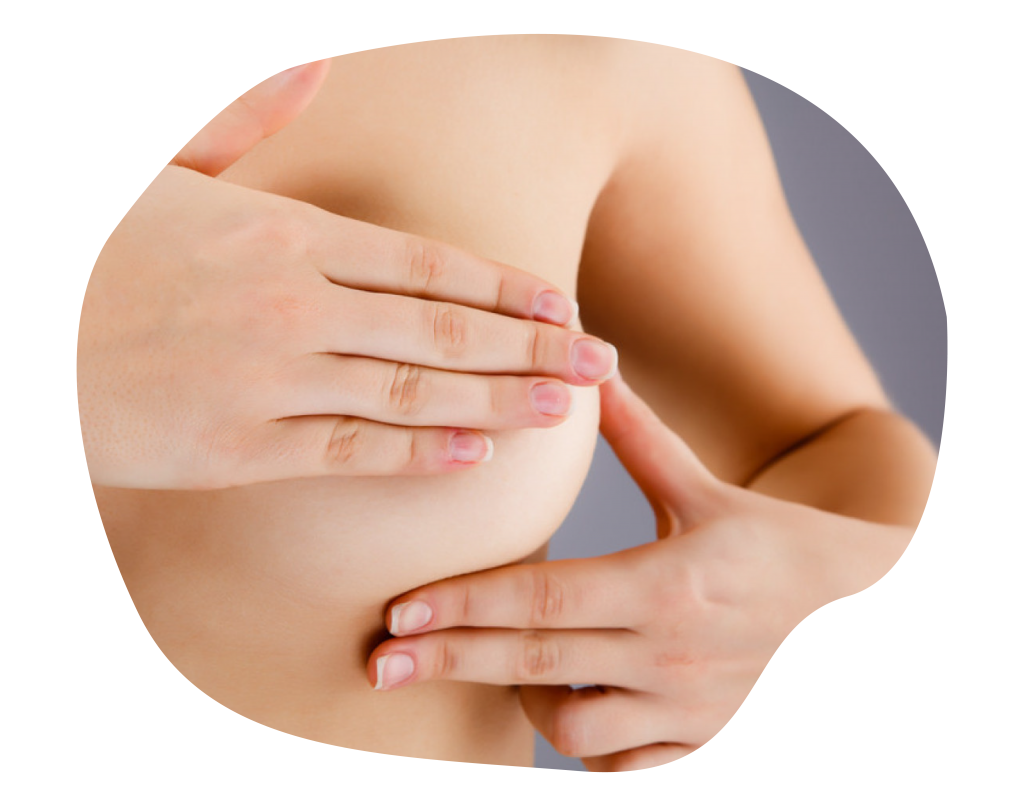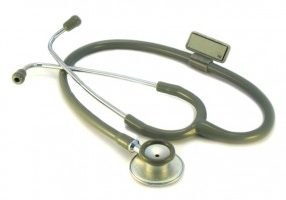WHAT IS RECONSTRUCTION?
The aim of breast reconstruction is to restore the shape of a breast following an operation to remove the breast.

What is breast reconstruction?
Breast reconstruction is an operation to restore the shape of the breast after mastectomy (removal of a breast), partial mastectomy or wide local excision (removal of part of the breast.) Reconstruction can be carried out at the same time as the initial surgery (immediate reconstruction) or months or even years later (delayed reconstruction).
Total or partial removal of the breast(s), is likely to affect how you look and feel. Some women wish to address the loss of one or both breasts by undergoing breast reconstruction, while others may opt not to have any reconstruction at all.
Breast reconstruction can be performed by creating a breast with an implant, or by moving skin and fat, and sometimes muscle, from another part of your body. A combination of these techniques may be used for some women.
The types of breast reconstruction available may differ between hospitals and surgeons. Pre- and post-operative support/care varies from hospital to hospital; please consult with your own hospital to discuss your personal care plan.
However, you should be given the opportunity to discuss all types of reconstruction.
Why have breast reconstruction?
Before you decide whether or not to have reconstruction, you should be provided with all the information you need. One of the first major decisions is whether or not to actually have reconstruction.
The majority of women in the UK, in fact, decide not to have reconstruction; it is a very individual decision and whatever you decide must be the right decision for you.
Many women wish to address the loss of one or both breasts by undergoing reconstructive surgery or using an external prosthesis. Each woman is different and therefore making an informed choice that achieves the right outcome for you is important. For some women, the use of a prosthesis is difficult and so you may wish to restore your breast(s) to improve your body image and emotional well-being.
Breast reconstruction means more complex surgery than a lumpectomy or mastectomy alone, and, of course, there is potential for complications. It is a process which often involves several operations over a period of months, possibly years.
So, for various reasons you may not wish to go ahead, or maybe not at this time. The most important thing is that it is your body and you are in control.
Breast reconstruction has become an important part of the treatment of breast cancer and risk-reducing procedures. Many women who undergo breast reconstruction report feeling “whole” again and highly recommend it to other women facing a similar decision.
Surgery Considerations
What do you need to consider?
Your surgeon will advise you on the types of reconstruction available and the ones that are most appropriate for you. The decision is a joint one between you and your breast/plastic surgeon, however there are a number of considerations to bear in mind, both medically and personally:
- The amount of breast tissue that has been removed
- The healthiness of the tissue at the planned operation site
- Whether or not you have had radiotherapy to the area of the breast or chest wall
- Your general health
- The amount of tissue you have available on your body
- The quality of your skin
- Length of recovery
- Your wishes and lifestyle
- Family life
- Work commitments
What type of reconstruction is for you?
The final choice of reconstruction surgery depends on body shape, available tissue, skin quality, appearance of the opposite breast, health and, of course, the individual woman’s wishes.
The key to successful reconstruction is careful selection to match you with the operation which is most appropriate. The result is influenced by the reconstruction chosen, the quality of the body tissue and the quality of the surgery.
The realistic goal will be the improvement of the appearance rather than the perfect replacement of the breast. A reconstructed breast will have altered sensation – this varies from patient to patient. Occasionally surgery on the remaining breast is required to achieve symmetry.
In order to prepare for the surgery and to reduce your risks of complications you should ensure you are as fit and healthy as possible and have a healthy body weight. If you smoke, then you need to give up, stopping all nicotine replacement products too.
Timing of the reconstruction
Immediate Reconstruction
It has become increasingly common to reconstruct the breast(s) at the same time as the mastectomy, thereby preventing a period of complete absence of the breast(s).
Not all women want immediate reconstruction, however; some feel unable to cope with the diagnosis and the reconstruction at the same time, preferring to deal with one thing at a time, and delaying the reconstruction until a time that is more appropriate. This difficult decision can sometimes be too much to cope with when you are dealing with a diagnosis of cancer or discovery of a genetic disorder.
There are some apparent advantages to immediate reconstruction. More of the natural breast skin may be maintained and the scar patterns may differ to that of a delayed reconstruction. The benefit of immediate reconstruction is that generally there is one less operation to go through. Some types of immediate reconstruction mean that a nipple can be created during the same procedure, thus reducing the number of operations. It is common, though, to require a further symmetrising procedure some months after the initial breast mound is created, followed by a nipple reconstruction and areola micropigmentation (tattooing).
Not all women are candidates for immediate reconstruction, particularly if post-operative radiotherapy is needed. You should discuss with both your breast surgeon and your plastic surgeon whether this option is suitable for you.
Delayed Reconstruction
After the mastectomy has been performed, all the wounds are healed and any treatments of the cancer have been completed, delayed reconstruction can be considered. If no chemotherapy or radiotherapy is needed, this can be done as early as three months after surgery, allowing time for the tissues to mature and soften.
If chemotherapy or radiotherapy is necessary, it is preferable to wait at least six months after the completion of these therapies before beginning the reconstruction surgery. That way your tissues have the opportunity to recover.
Types of breast reconstruction
The type of reconstruction you choose will depend on whether you have either a partial mastectomy or a full mastectomy.
If you have a partial mastectomy or local excision:
This involves leaving a significant portion of the original breast intact. Some patients will have radiotherapy following this operation in order to destroy possible lingering tumour cells. The common options are to:
- Move the other parts of the breast around, to fill the defect at the time of the excision. This is commonly called a therapeutic mammaplasty and can produce good results. You do need to have a large enough breast to provide the tissue to be moved. The other breast can then be reduced to match.
- Fill the defect by bringing in your own tissue from elsewhere to restore the shape with what is called a flap.
- This is usually in the form of a “local flap” where tissue is moved around without interrupting the blood supply.
- Sometimes a “free flap” is used, which is where the tissue, with its blood supply, is detached and then re-attached to the breast area with microsurgery.
- The third option for filling the defect later on is lipomodelling/lipofilling. Here, fat is taken from another part of the body by liposuction, concentrated and injected carefully back into the breast. This can be done as a day case, under local or general anaesthetic.
If you have a full mastectomy:
Then, in this case the whole breast must be reconstructed.
There are three main types of breast reconstruction you can consider:
- An implant to replace all or some of your breast tissue
- Having a breast shape made from your own body tissue, using a flap
- Having a combination of implant and body tissue reconstruction

Watch our new reconstruction support videos to find out more about types of breast reconstruction surgery, other procedures and to see real results videos.
As well as supporting women who have been diagnosed with breast cancer and considering immediate or delayed reconstruction, Keeping Abreast also supports those women considering elective reconstruction surgery due the discovery of a breast cancer gene. This support is provided by our sister group ‘Nick of Time’
About Us
Keeping Abreast was established in September 2007 by patients Anna Beckingham and Beverley Birritteri and Breast Reconstruction nurse specialist Ruth Harcourt. They recognised a great need for women, both newly diagnosed with breast cancer and facing the possibility of mastectomy, and also women further down the line who are also considering reconstructive surgery, to be able to meet and talk to other women who have been through similar experiences. This allows women make an informed choice about whether or not to proceed with breast reconstruction.
© 2021 © Keeping Abreast Breast Cancer Reconstruction Support Group, registered charity number: 1129522. Registered office: M&A Partners, 7 The Close, Norwich, NR1 4DJ



